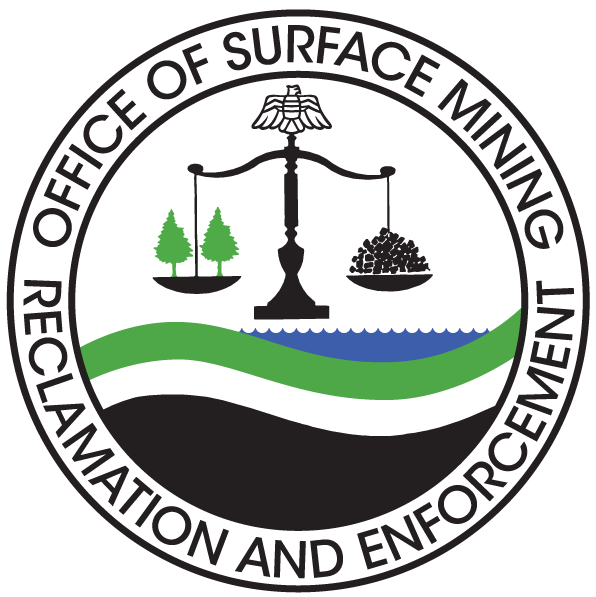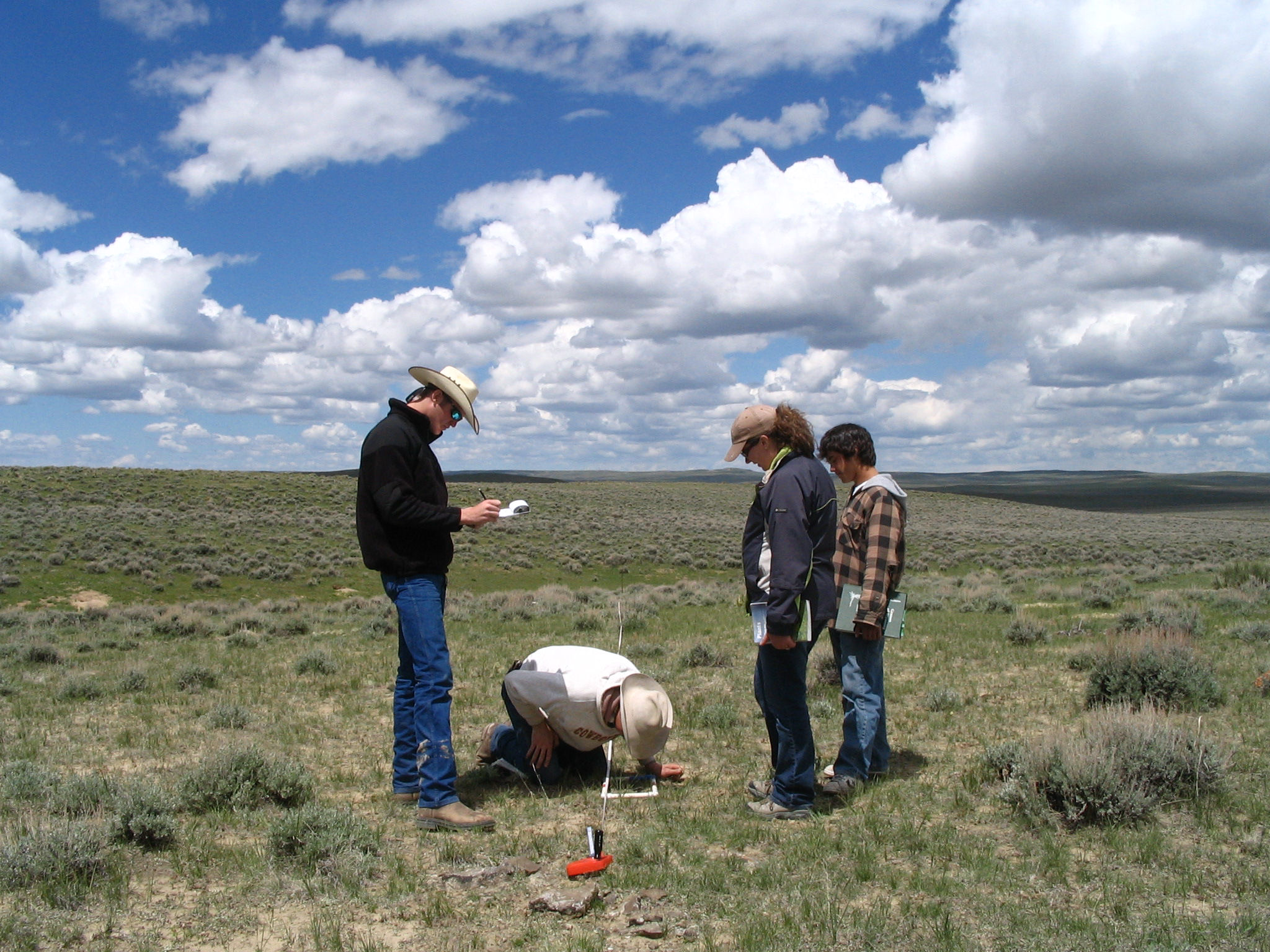Reclamation Bonds
An applicant seeking to obtain a coal mining permit must post a reclamation bond to ensure that the regulatory authority has sufficient funds to reclaim the site in the case the permittee fails to complete the approved reclamation plan.
Under SMCRA 509(c) there are several avenues for coal mining companies to provide financial guarantees that mining operations would be reclaimed. There are three major types of reclamation bonds:
- Corporate surety bonds;
- Collateral bonds (cash; certificates of deposit; first-lien interests in real estate; letters of credit; federal, state, or municipal bonds; and investment-grade securities); and
- Self-bonds (legally binding corporate promises without separate surety or collateral, available only to permittees who meet certain financial tests)
State regulatory programs vary somewhat in terms of which financial instruments are acceptable. A few states also have exercised their discretion to exclude the self-bond option.
Overview of Reclamation Bonds
SMCRA provides that, as a prerequisite for obtaining a coal mining permit, a person must post a reclamation bond to ensure that the regulatory authority will have sufficient funds to reclaim the site if the permittee fails to complete the reclamation plan approved in the permit.
To remain qualified, self-bonded permittees must maintain a tangible net worth of at least $10 million, possess fixed assets in the U.S. of at least $20 million, and either meet certain financial ratios or have an "A" or higher bond rating.
Collateral posted as bond must be owned solely by the permittee, be free of all liens, and be valued at current market value not face value. The regulatory authority reduces the market value of collateral by a margin sufficient to cover the regulatory authority's cost to liquidate the collateral in the event funds are needed for reclamation.
Subject to regulatory authority approval, a permittee may post any combination of bond types and instruments recognized under the applicable regulatory program provided the total sum equals the required reclamation bond amount at all times.
Each regulatory authority must prescribe and furnish forms for filing reclamation bonds. These forms differ for each type of bond. Each form must meet the requirements of the applicable regulatory program. In addition, each form must comply with standard contract law, property law, the Uniform Commercial Code, banking law, and surety law. The providers of the bonds are subject to the laws of their regulators: state insurance commissioners, state banking examiners, and the Comptroller of the Currency.
Some bond instruments such as certificates of deposit are negotiable instruments that need to be secured. All bond documents need to be systematically filed and protected. Therefore, OSMRE and state regulatory authority offices secure bond instruments in locked filing cabinets, vaults, or fireproof safes to protect them from loss, theft, or fire. Regulatory authorities use computer databases to track the status of the bonds they are holding.
Reclamation performance bonds are posted to cover all operations during the term of the permit. Prior to permit issuance, the permittee must post a bond to cover one of the following areas:
- The entire permit area;
- The initial area of land to be affected under a cumulative bond schedule; or
- The initial area of land to be affected under an incremental bond schedule.
The regulatory authority must approve cumulative and incremental bond schedules should the permittee select one of those options. Under either a cumulative or an incremental bond schedule, the permittee must post additional bond before affecting lands in succeeding increments or additional lands in accordance with the approved cumulative schedule.
Reclamation bonds are financial instruments with unique attributes and requirements. Some instruments are the pledged assets of a mining company (cash, real estate, government securities), some are guarantees of a permittee's performance (surety bonds), and some are instruments that provide evidence of a deposit of cash (certificates of deposit) or the existence of a line of credit (letters of credit). All bonds must be payable to, or pledged to, the regulatory authority. When the federal government owns either the surface or coal on lands within the permit area and a state is the regulatory authority for those lands, the bond must be payable jointly to both the state and the United States. When OSMRE is the regulatory authority, all bonds must be payable to the United States.
A permittee wishing to post a corporate surety bond or letter of credit must obtain one from a surety company or other financial institution. A surety company must be licensed in the state where the operation is located. The financial institution must be organized to do business in the United States. The decision to issue a surety bond or letter of credit will be based on the surety company's or financial institution’s analysis of the permittee's credit rating, experience, and net worth. Some surety companies and financial institutions require full or partial collateral from the permittee and a contract or indemnity agreement. These agreements require the permittee to reimburse the bank or surety company for any forfeited amount the bank or surety company paid to the regulatory authority. The permittee also pays an annual premium or fee to the surety company or financial institution. Unlike the premium for an insurance policy, the premium for a surety bond is not based on the risk of a claim being filed. Instead, the premium consists of a percentage of the bond amount.
The Surety & Fidelity Association of America recommends average premium rates to the surety industry. The annual fee that the permittee pays for a letter of credit is based on a percentage of the amount of the letter of credit. Letters of credit must be irrevocable during their terms. Surety bonds must be non-cancellable during their terms, except for coverage on undisturbed land with the regulatory authority's prior approval of the cancellation.
When a surety company writes a surety bond, it guarantees the mining company's completion of the reclamation plan approved in the permit. If the permittee does not reclaim the site, the surety company must pay the bond sum to the regulatory authority. The regulatory authority may allow the surety to perform the reclamation in lieu of paying the bond amount. However, the surety must comply with all reclamation requirements of the approved permit and regulatory program, including the revegetation responsibility period. Corporate surety bonds posted to meet the bonding requirements section 509 of SMCRA are non-cancellable, even for the failure to pay premiums or bankruptcy of the permittee.
In some instances, surety bonds have been issued by individuals fraudulently posing as representatives of legitimate surety companies. To avoid fraud, the surety industry encourages regulatory authorities to verify the bond with the home office of the surety company and to use the Surety & Fidelity Association of America’s Bond Obligee's Guide.
When mining federal property (leased federal coal or land in federal surface ownership), corporate surety bonds may only be accepted from surety companies that are listed in the U.S. Department of the Treasury’s Listing of Certified Companies (Circular 570), which is updated annually on July 1st.
The regulatory authority establishes the minimum amount of bond required, based upon the permittee's estimate of reclamation costs and the regulatory authority's independent analysis of the amount that would be necessary for a third party to complete the reclamation plan in the event of bond forfeiture. The bond amount generally reflects reclamation costs at the projected point of maximum reclamation liability (usually the point of maximum disturbance) within the permit area or an initial increment of that area. Prior to disturbing new acreage, the permittee must post additional bond. In addition, the regulatory authority must require the permittee to post additional bond whenever the cost of future reclamation increases. As the permittee completes phases of reclamation, the permittee may apply for partial bond release.
In lieu of requiring permittees to post a bond covering the entire estimated cost of completing the approved reclamation plan, some states authorize or require permittees to participate in an alternative bonding system, which is commonly known as a "bond pool." Under these systems, the permittee normally posts a conventional bond (surety bond, letter of credit, etc.) for an amount determined by multiplying the number of acres in the permit area by a flat per-acre assessment, which may vary depending on the type and site-specific characteristics of the planned mining operation. In addition, the permittee generally must pay an annual acreage fee or a tonnage fee as coal is mined. These funds are used to reclaim any site for which a participant in the alternative bonding system fails to complete all reclamation obligations. Under OSMRE regulations, all alternative bonding systems must provide a significant economic incentive for the permittee to comply with reclamation requirements and they must ensure that the regulatory authority has adequate resources to complete the reclamation plan for any sites that may be in default at any time.
After a mining company has met all the reclamation requirements of the approved permit and regulatory program, the regulatory authority may release the reclamation bond. The permittee may apply for release of the bond on all or part of the permit area or increment as reclamation is completed. The regulations recognize three discrete phases of reclamation for purposes of bond release. Phase I includes backfilling, regrading, and drainage control. Phase II occurs after topsoil replacement and establishment of revegetation. Phase III requires meeting the revegetation success standards and follows completion of the revegetation responsibility period, provided the site remains in compliance with all applicable reclamation requirements.
NOTE: “Please disregard the appendices with respect to forms that must be submitted by the permit applicant or permittee. Readers should instead refer to the link below, which contains all bond forms currently approved by OMB under the Paperwork Reduction Act."
Directive TSR-1: Calculating Reclamation Bond Amounts
Handbook for Calculation of Reclamation Bond Amounts
Reclamation Cost Calculator software (to be used with the Handbook)
- Version 2.4.9* is now ready for download. This version adds the ability to print reports to plain text files or to PDF files. You will need this password to complete these installations: osm!z6n0/
- This installation will install program file, help files, new version of the Borland Database Engine, and empty database tables. If you already have the Mine Bond Calculator installed on your machine, this installation will overwrite any data you may have entered into the database. Click Here to download the program. Note the file is a 19 MB zip file.
- After you have installed version 2.4.9 and if you are having problems getting the database to open, there are 3 files that you can delete. They are “pdoxusrs.net”, “pdoxusrs.lck”, and “paradox.lck”. You can use the search utility of windows to find these files. Delete them and run the program again.
* Installation requires Windows 7 32 bt configuration.
-
Self-Bonding Policy Advisory Rescission Memo (October 12, 2017)


